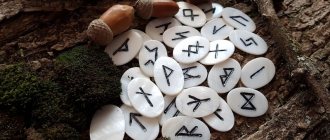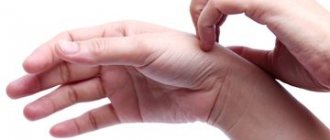Since ancient times, the camel has been considered a symbol of Asia and the Middle East; it was most strongly associated with Arabia. Thanks to its ability to move heavy loads for many kilometers, to endure thirst, heat and hunger without complaint, this beast of burden quickly became a symbol of hard work, determination, humility, repentance, and self-esteem.
In Arab countries, since ancient times it has personified nobility and royalty. The Prophet Muhammad was often called the “camel prophet” or “the camel keeper of Mecca,” and his two favorite camels received special honors after death: the fastest camel, al Adha, moved to heaven, and al Kasawa was buried near the holy Kaaba in Mecca.
Camel on an ancient Roman mosaic in the city of Petra. For the ancient Romans, the camel was a symbol of Arabia.
Prophet Muhammad riding a camel and Prophet Issa (Jesus Christ) riding a donkey. Medieval Persian miniature. Muhammad is shown riding his fastest camel, Al Adha, which he took with him to heaven
The camel was also a symbol of arrogance and arrogance. Some Hebrew sources report that the serpent that tempted Eve in Paradise had the head of a camel. This creature is also called the "winged camel". According to another version, a serpent with a camel's head was an attribute of the demon Samuel, and it was on it that the demon flew to heaven to seduce Eve.
In Christianity, the camel immediately became a symbol of hard work and resigned submission to God's will. Thus, John the Baptist, while in the desert, wore a hair shirt made of coarse camel hair instead of clothing - this was his severe asceticism. To explain how difficult it is for a rich person to lead a righteous life and earn the Kingdom of God with his deeds and thoughts, Jesus Christ used the analogy: “It is easier for a camel to go through the eye of a needle than for a rich man to enter the Kingdom of God.”
The camel on the coat of arms of the city of Baku symbolizes the role of caravan trade in the development of the city
Coat of arms of Eritrea. The camel is the national symbol of this young state
The Iranian prophet and founder of the new religion, Zarathushtra, was called “master of the old camel” - this was his “external” name, designed to protect him from evil spirits. In the 19th century German philosopher Friedrich Nietzsche, in his famous book “Thus Spake Zarathustra,” used the image of a camel as a symbol of an enslaved, overloaded with cultural models of the “hardy spirit”, incapable of free creativity. However, the camel then turns into a lion, which will abandon old values to create new ones of its own. The next stage of symbolic transformation is the child who, in his innocence, transforms creativity into sacred play.
Adoration of the Magi
The camel is a Christmas emblem. Three magicians - Caspar, Balthazar and Melchior - followed the Christmas star and arrived in Bethlehem. There, in the stable, they found the newly born Jesus Christ with his mother. The Magi presented him with gifts - gold, incense and myrrh. Gold, the most precious of all metals, is presented to Jesus as the King of the entire human race, frankincense (translated as white), precious resin - as a high priest and teacher, and myrrh, a substance capable of resisting decay - as a person who will conquer death by death .
Three wise men on the way. Painting by the French artist J. Tissot, 19th century.
How to place a camel figurine
Camels should be placed in a high place so that they symbolically enter the house, room or office.
On the desktop, figurines should be placed in the north. Then the camel will symbolize a smooth road on the path to success. Complex projects will be implemented more easily. The symbol will eliminate problems emanating from difficult people and politicians.
The camel can be placed in its direction with a shen qi (or secret place). This is especially true for those who have had a prolonged period of failure in life.
In the dining room and living room, camels will smooth out the rough edges of life.
For people undergoing financial difficulties, it is recommended to place the figurines near a safe or place where securities, money and files are stored.
What is your impression of the article?
Constellation Camel (Giraffe)
The modern constellation Giraffe bore a different name for a long time. Initially, it was called the Camel, in honor of the meeting of Rebekah and Isaac at the well, at the watering place of these animals. Only in 1624 did the astronomer J. Bartsch finally assign the name Giraffe to this cluster of stars. Confusion also arose due to the fact that Europeans did not always clearly distinguish between these two exotic animals. In addition, from Latin the word giraffe (Camelopardalis) can be roughly translated as “spotted camel.”
Rebekah and Isaac at the well. Medieval miniature
Constellation Camel (Giraffe). Illustration from the astronomical atlas “Uranography” by J. Hevelius
Share link
What does a camel symbolize?
The camel symbolizes strength, hard work, endurance and perseverance in achieving a goal. The camel often kneels. This habit began to be compared to the prayer position of the body.
Camel helps overcome life's difficulties
In the world of Feng Shui, the camel is considered the protector of people, carrying them through difficult trials and difficult times. This applies to both career situations and everyday life. The camel is an excellent symbol and an excellent feng shui medicine, helping to get out of a difficult situation without loss or injury, or even with some benefit.
The endurance and perseverance of a camel, as well as the ability to endure difficult living conditions, are transferred to its owner.
A pair of one-humped camels protects finances, and a pair of two-humped camels guarantees cash flow and stability. A camel will be a wonderful talisman of good luck in both difficult and favorable times.
Fortune telling wax camel
A camel that appears on the bottom of your cup during a wax fortune telling indicates that you have an excessive sense of duty and inflated responsibility, which often not only creates enormous difficulties for you, but simply poisons your life.
If you have been telling fortunes about a person you are interested in, know that for him it is work, and not love at all, that is the basis of life; perhaps his excessive sense of duty will complicate the ease and beauty of your relationship, but he is a reliable, although perhaps at times boring, partner.
The image of a camel indicates that the person you are predicting is very hardworking.
The image of a camel indicates that the person you are fortune-telling is very hardworking. It is work that is the meaning of life for him, and not love at all, as you might want. Such a person is a reliable life partner, but sometimes it can be boring with such a partner, and his exaggerated sense of duty can deprive the relationship of a certain amount of grace and lightness.
A camel in wax divination speaks of a strong desire to gain new knowledge, experience and memories through travel. The appearance of a camel can also be interpreted as wealth, which is acquired through hard work (if it is two-humped) or hard work (if it is one-humped). If suddenly this animal appears surrounded by dots, it means that the person has become rich, but continues to live very modestly.
Also, if the figure of a camel falls out during wax fortune telling, it is recommended to pay attention to your surroundings, because among your friends there may be those people who are disrespectful to friendship, spread rumors and do not value friendly relations enough.
Sources:
- https://astromega.ru/znachenie-figur-pri-gadanii-na-voske/
- https://sacralis.net/threads/chto-oznachaet-verbljud-na-kofejnoj-gusche.147/
- https://famt.ru/sonnik/k-chemu-snitsya-verblyud-vo-sne-zhenschine/
- https://coffee-portal.ru/gadaniya/gadanie-na-verblyud-kofejnoj-gushhe-tolkovanie
Totem in astrology
Followers of Zoroastrianism used their own calendar, which was based on the cycle of rotation of the planet Saturn around the Sun. It is 32 years, each of which corresponds to a totem animal. The sixteenth year of the cycle according to the Zoroastrian horoscope passes under the sign of the camel (dates: 1921, 1953, 1985, 2021, 2049). Follows the Year of the Badger and precedes the Year of the Hedgehog. The totem tells a person what qualities he needs to have, what path to follow in order to achieve grace and the protection of higher powers.
The color of the year is red, its divine patron is Rashnu, the god of righteousness, judge in the afterlife. This means that the year of the Camel will be associated with the restoration of justice, balance, and making correct and fair decisions. This period is characterized by the end of conflicts. Herbivorous totems will have to work hard, but their efforts will eventually be rewarded.
In the zodiac horoscope, the camel is the patron and totem of the zodiac sign Aquarius. A talisman in the form of this animal is recommended primarily for men, who are given perseverance and the ability to achieve their goals.
An animal that is a sign of Allah
The camel is a sign of Allah for those who reflect
To draw people's attention to the harmony and complexity of the universe, the Koran talks about the height of the heavens, the breadth of the earth, the majestic mountains - and then mentions the creatures that the inhabitants of the Arabian Peninsula are accustomed to seeing before their eyes every day. The most common pack animal in the deserts of Arabia is the camel:
“Do they not see how the camels were created, how the sky was lifted up, how the mountains were raised, how the earth was spread out?” (Surah al-Gashiya, verses 17-20)
Camels were domesticated and used as pets about four thousand years ago, and since then they have served people faithfully. In ancient times, when there were no cars or other means of transport, the Arabs used camels as a means of transportation, since many of the qualities of these animals are convenient for survival in the desert. Even now, many Bedouin tribes of Arabia and North Africa prefer camels to cars, buses and other modern transport.
Camels are very hardy and strong creatures; they can survive in conditions where other similar animals, like horses, would not survive even two days.
Why are they so unique?
Camels are covered with thick hair, which protects them from the heat, since it is able to reflect the rays of the hot sun. By the way, this wool is also very valuable - fabrics, carpets and many other things are made from it.
Camels have excellent eyesight - they can see into the distance for a distance of more than a kilometer, and thanks to their good memory, they are well oriented in desert areas.
Camels have one hump on their back - like the Arabian one-humped camels (they are called dromedaries), or two humps - like the Central Asian Bactrian camels (Bactrians). This hump contains fat deposits, thanks to which a camel can go without food for almost a month.
A camel is extremely unpretentious - it can go for a week without water, since the water it drinks is stored in its insides, in a special bag (by the way, camels drink a lot, in one sitting they are able to drink about two hundred liters of water). Moreover, camels know how to find water in the desert - they sense water at a distance of sixty kilometers!
The owners do not have to specially prepare food for these animals - they are able to feed themselves. At the same time, thanks to the thick skin on their lips, they can easily eat thorns and other tough desert plants. If a camel does not find water, the liquid contained in the plants it eats will be enough for it.
A camel is very strong - it is able to lift and carry a load equal to half the weight of its body, walking with this load thirty to forty kilometers a day. Without a load, with only one rider, a camel can walk a hundred kilometers a day without any problems.
In ancient times, camels were used not only as pack animals, but also as fighting animals. They know how to kick well, and in all directions, and not just forward with their legs or backwards, like a horse. To top it all off, camels are good at spitting a very thick and pungent-smelling stomach fluid.
In addition, camels themselves were a source of food for their owners, since their meat and milk were eaten, clothes were made from their skins, and houses were built. Camel milk, by the way, is very thick and never curdles in the heat. That's how many wonderful and unusual qualities camels have - that's why the Koran says that a person should think about their structure and thus come to the idea of the power of the Creator.
Camel of the Prophet Salih (peace be upon him)
The Qur'an tells the story of the camel of the prophet Salih (peace be upon him). Prophet Salih (peace be upon him), who is mentioned in the 7th sura of the Koran “The Barriers” (al-Araf), came preaching monotheism to the Thamud people. People refused to believe him and demanded a sign from him to prove his mission.
Then, through the prayer of the prophet, the Almighty miraculously brought out a red camel from the split rock (according to another version, a large stone turned into a camel in front of the amazed people). The Prophet asked the people to treat this camel well and give her water and food.
However, the people killed the camel, proudly declaring to the prophet that they were not afraid of punishment from above:
“They killed the she-camel, exalted themselves over the command of their Lord and said: “O Salih! Send down to us what you threaten, if you really are one of the messengers" (Surah al-Araf, verse 77).
For this, the Almighty punished these people by sending them an earthquake that destroyed them:
“An earthquake struck them, and they were thrown down on their faces in their homes” (Surah al-Araf, verse 78).
Camels in prophetic hadiths
The Prophet Muhammad (peace and blessings of Allah be upon him) also had a riding camel, which, according to legend, was called Adba. When he arrived in Medina, all the Muslims there vied with each other and asked the Prophet (peace be upon him) to stay in their houses. In order not to offend anyone, he told them that he would stop where his camel stopped. And she stopped at the house of the companion Abu Ayub al-Ansari - this was the first residence of the Prophet (peace be upon him) in Medina.
According to reports, this camel was very fast - not a single camel could outrun her. But one day a certain Bedouin arrived in Medina with his camel, competitions were organized, and his camel overtook all the others, including the camel of the Messenger of the Almighty (peace be upon him). The companions were upset - they thought it was offensive that their beloved Prophet (peace be upon him) did not ride the fastest animal. But the Prophet (peace be upon him) only smiled and said to them:
“Indeed, whatever is exalted in this world, Allah will certainly humiliate it.”
As you know, the Prophet (peace be upon him) instructed people to be merciful not only to each other, but also to other living beings. Since, as we said above, camels were a very common pet among the Arabs, he instructed them to take good care of them, feed them and not torment them with hard work.
As reported in one of the hadiths:
“One day a camel approached the Prophet (peace be upon him), tears flowing from his eyes. The Prophet (peace be upon him) addressed those present with a question: whose camel is this? One young man from the Ansar replied that this was his animal. The Prophet (peace be upon him) strictly reprimanded him - it turned out that the camel complained to the Messenger (peace be upon him) that his owner was forcing him to work beyond his strength and feeding him poorly.”
Another time, the Prophet (peace be upon him) also saw a camel that looked very bad - it was skinny, with matted hair. The Messenger of the Almighty (peace be upon him) reprimanded the owner for mistreating the animal, reminding him how much they owe to these animals:
“Fear Allah regarding the treatment of these dumb animals! You ride them and carry loads on them if they are healthy, you share their meat and use their wool if they are healthy.”
Instructing people who were about to go on a journey, the Prophet (peace be upon him) told them about the need to ensure that their camels could find food and eat enough:
“If your path goes where there is grass, stop and let the camels graze, and do not rush them. If your path runs through barren land, speed up and try to quickly get to the place before your camels are completely exhausted.”
So, as we see, camels really were a sign of the Almighty for many peoples who could appreciate the excellent qualities of these animals. At the same time, the Prophet of the Most High (peace be upon him) taught people to treat them well if they want to keep them as pets and use their strength and endurance.
Anna Kobulova
Also on this topic read:
Is it true that a person’s sins are forgiven for treating animals well?
16 Animals Mentioned in the Quran
Why is the year of birth of the Prophet (peace be upon him) called the “year of the elephant”?
Antitotem
The anti-totemic animal is the hyena. This animal leads an idle lifestyle, is distinguished by its corpulence and selfish interest in others, and often forgets about people who once did good to it. A camel should avoid people who do nothing for nothing and do not have curiosity and sustained interest in the world around them. Hyenas are usually short in stature, they are very greedy, demanding of others, and envious. Often they do not like people who are not greedy and like to spend their last money on travel or who may decide to work in a distant country. It is better for Camels not to communicate with them.










